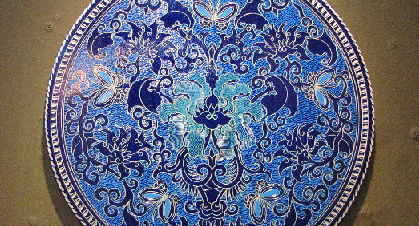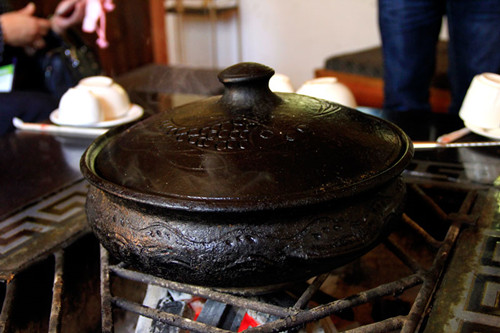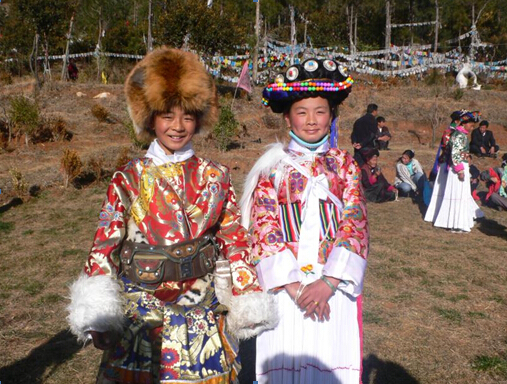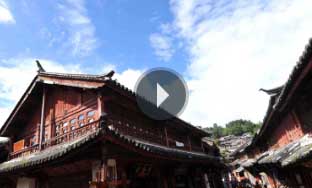Fit food guide
(China Daily)
The latest fad foods in China are drawn both from time-tested products grown locally and others that come from abroad, Pauline D. Loh reports.
Sea-buckthorn berries (shajizi, 沙棘子)
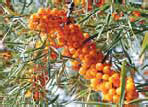
The herders and shepherds of Inner Mongolia autonomous region have long used sea-buckthorn as fodder for their cattle and lambs. This real super food has an extremely high vitamin C content, about 15 times that of an orange by weight and is packed with vitamin E, dietary minerals and omega-7, a fatty acid that helps build healthy hair, skin and nails.
It is rich in carotenoids, amino acids, polyphenols and flavonols. Sea-buckthorn is available in concentrates, juices, and powder form as supplements.
Cordyceps (dongchong xiacao, 冬虫夏草)

This is the caterpillar fungus, a parasitic symbiosis that has produced one of the most expensive traditional Chinese tonics, literally worth more than its weight in gold.
The moth caterpillar is attacked by fungus, which slowly takes over the insect body and develops into a mushroom the following spring.
It is found primarily on the Qinghai-Tibet Plateau as well as in the northern parts of Sichuan, Guizhou and Yunnan provinces.
Traditional Chinese medical practitioners swear by its immunity-enhancing properties and it is often prescribed to "strengthen the qi", the energy force in the body. Current price for cordyceps is about 200 yuan ($32) per gram, or 200,000 yuan per kilogram.
Cordycep flowers (chongcaohua, 虫草花)
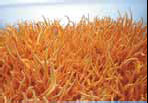
This is neither cordyceps nor flower. It is a mushroom, developed and cultivated after research isolated the main ingredient in cordyceps that is believed to be beneficial to health - cordycepin. The bright orange-yellow mushrooms are sold as a fresh tonic supplement for soups, stews and stir-fries. It is certainly a much more affordable alternative to the worm-fungus, and tastes better, too. Maca root (Peruvian ginseng)
This is a relatively new tonic sold in China after being successfully propagated in the highlands near Lijiang, Yunnan province. This small, turnip-like root was first cultivated in the high plains of central Peru in the Andes, and was used as a staple food much like rice or wheat.
Modern research has shown that maca contains natural substances that stimulate the pituitary and hypothalamus. Maca roots are thus beneficial to the endocrine system, and also contain calcium, potassium, iron, silica and many other trace minerals. Mainly sold dried and available online.
Apricot kernels (nanbeixing, 南北杏)
These nuts have been part of the TCM pharmacopeia for as long as medicine has been practiced in China.
The apricot kernels are actually a combination of nuts - the northern apricots have bitter kernels that are slightly cyanotic and toxic if too much is taken, and the sweet southern apricot kernels are larger and heart-shaped.
The normal ratio is two parts sweet to one part bitter kernels. The kernels have been used as part of cough cures, to clear phlegm and ease lung congestions. They are seldom eaten raw and are usually part of a prescription for herbal infusions, or added to savory or sweet soups.
Wolfberries (goujizi, 枸杞子)

Wolfberry, known as goji berries in the West, is another super food whose orange-red fruits have been used since ancient times in China as a general tonic, to protect the liver, improve vision, strengthen weak legs and promote longevity.
Wolfberry fruits, fresh or dried, contain 11 essential minerals, 22 trace minerals, seven vitamins and 18 amino acids, such as calcium, potassium, iron, zinc and vitamin C. The fruits are fragile, so wolfberries are sold dried. They are easily rehydrated and do not lose any nutrients through the dehydration process.
Pomegranates
|
Photos by Pauline D. Loh and Provided to China Daily |
Some people are convinced that Eve ate a pomegranate and not the legendary apple in the Garden of Eden. If so, she certainly knew her fruit.
The pomegranate is a powerhouse of antioxidants, and a glass of pomegranate juice will satisfy a day's requirement of vitamin C for the average adult. The fruit is also rich in vitamin B5, potassium and fiber, if you eat the seeds. Clinical research has suggested that pomegranate juice can help reduce the risk of heart disease.
In Indian ayurvedic medicine, the pomegranate has been used for thousands of years. Its bark and rind are traditional remedies for diarrhea and dysentery while its juice is prescribed to soothe throats and stem nosebleeds and bleeding gums.
As a cosmetic, a potion made from various parts of the plants is supposed to firm sagging breasts and also cure cataracts. Available fresh, in juice and as pomegranate molasses, it is often used in Middle-Eastern cooking.
Blueberries
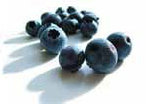
When it comes to antioxidants, few come close to the blueberry. The fruit has long been recognized for its flavor, nutrition and health benefits and they are packed with antioxidants that help neutralize harmful free radicals that can lead to cancer and other debilitating age-related symptoms. Blueberries have twice the number of antioxidants that spinach has, and it is also rich in pectin, a soluble fiber that is effective in lowering cholesterol. Fresh blueberries are higher in vitamins A and C than frozen or canned. Many provinces in China now grow blueberries commercially, especially in the northeast.
Dark chocolate
This is probably everybody's favorite super food. Next time you munch a piece of chocolate, skip the guilt and enjoy it - it's good for you.
Natural dark chocolate is packed with antioxidants and phytonutrients that come from the cacao beans it is made from. The higher the percentage of cocoa solids, the more antioxidants it contains.
Studies claim that eating a little dark chocolate two or three times each week can help lower blood pressure, improve circulation and help prevent hardening of the arteries.
Dark chocolate also makes you feel good, as it contains a chemical that mimics the feel-good feeling of falling in love. Amor!
Contact the writer at paulined@chinadaily.com.cn.
Fan Zhen contributed to the story.
(China Daily 02/17/2013 page3)


